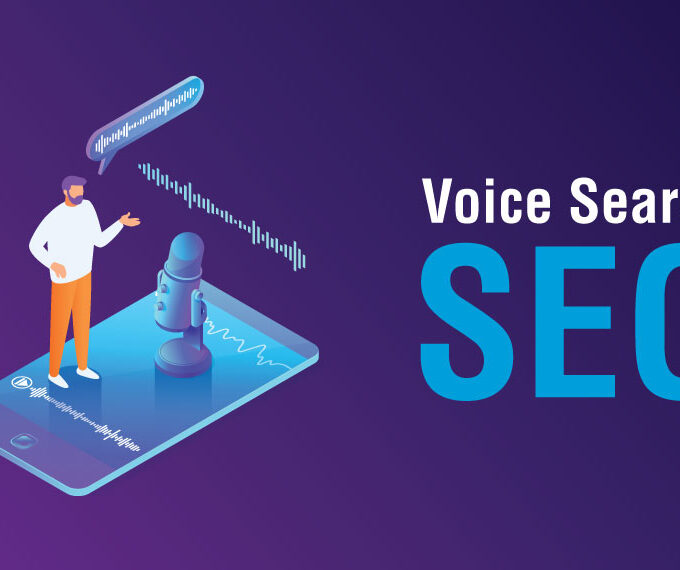Zero-Click Searches Explained: How to Still Get Traffic from Google

Have you noticed that sometimes you search for something on Google, get your answer instantly — and never even click a website?
You’re not alone.
In 2026, this is the reality of modern search. More than half of all Google searches now end without a single click. This phenomenon, known as zero-click searches, is reshaping the way marketers and businesses think about SEO.
But here’s the good news: zero-click searches don’t mean zero opportunities. You can still attract traffic, build visibility, and grow your brand if you understand how to play by Google’s new rules.
Let’s break it down.
What Are Zero-Click Searches?
A zero-click search happens when a user’s question is answered directly on the search results page (SERP) — so they don’t need to click through to any website.
For example:
- You type “weather in Nairobi” and see the forecast instantly.
- You search “Elon Musk age” and the answer appears right in a snippet.
- You ask “what is SEO?” and Google shows a short definition above the organic results.
These instant answers come from Google features such as:
- Featured Snippets (answer boxes)
- Knowledge Panels
- People Also Ask (PAA) boxes
- Local Packs (Google Maps results)
- Quick Answer Cards
They make Google more useful but also make it harder for websites to get clicks.
Why Zero-Click Searches Are Growing
Google’s goal is simple: give users the fastest, most accurate answer possible.
With the rise of AI-powered search, voice assistants, and mobile-first browsing, users want instant gratification.
Here’s why zero-click searches have exploded:
- AI Overviews (Search Generative Experience): Google now generates AI-based summaries right on the SERP.
- Voice Search & Smart Devices: Voice queries like “Who won the last World Cup?” rarely result in clicks.
- Mobile Search Behavior: On smaller screens, users prefer quick answers over scrolling.
- Google’s Own Features: Maps, calculators, translations, and snippets all keep users inside Google’s ecosystem.
It’s efficient for users but a challenge for marketers who rely on organic traffic.
How Zero-Click Searches Impact SEO
At first glance, zero-click searches sound like bad news. After all, if users aren’t visiting your website, how can you benefit?
But the impact isn’t entirely negative. Let’s look at both sides.
The Downsides
- Reduced Organic Click-Through Rates (CTR): Even if you rank #1, snippets may steal your clicks.
- Harder Conversion Tracking: You may get visibility but not measurable visits.
- Less Traffic for Informational Queries: Especially for definitions, facts, or short answers.
The Upside
- Higher Brand Visibility: If your site powers the snippet, your brand name gets premium placement.
- Authority Boost: Appearing in answer boxes builds trust and recognition.
- Voice Search Presence: Snippets often feed answers to voice assistants like Google Assistant.
So, instead of resisting the trend, the smartest marketers are learning how to optimize for visibility within zero-click environments and still capture valuable traffic.
How to Get Traffic from Zero-Click Searches
Here’s how you can adapt your SEO strategy to thrive in this new landscape.
1. Optimize for Featured Snippets
Featured snippets also called “position zero” are short answers Google pulls from web pages to display at the top of results.
To win these:
- Identify question-based keywords (Who, What, Why, How).
- Provide clear, concise answers (40–60 words).
- Structure content using header tags (H2, H3) and bullet points.
- Add context before and after the snippet answer to encourage clicks for more detail.
When your site owns the featured snippet, you may not always get the click but you get visibility, authority, and trust.
2. Use Schema Markup
Schema markup (structured data) helps Google understand your content better and feature it in rich results — such as FAQs, recipes, reviews, or events.
For example:
- FAQ Schema: Boosts your chance of appearing in “People Also Ask.”
- How-To Schema: Helps your tutorial content show step-by-step instructions directly in SERPs.
- Product Schema: Displays prices, reviews, and availability without needing a click.
Even though these might lead to fewer clicks, they dramatically increase impressions, brand exposure, and click quality.
3. Create Click-Worthy Context
If your snippet already answers the user’s question, give them a reason to click anyway.
Example:
“SEO stands for Search Engine Optimization — the process of improving your website’s visibility on search engines. But understanding how it works in 2026 requires more than just keywords — here’s what’s changing.”
By teasing deeper insights, data, or visuals, you encourage users to click for the complete story.
4. Focus on Long-Tail and Intent-Driven Keywords
Short, generic queries like “weather” or “time in Kenya” will always be zero-click. But long-tail keywords often lead to deeper intent and more clicks.
For instance:
- Instead of “what is SEO” → target “how to create an SEO strategy for small businesses.”
- Instead of “digital marketing” → target “best digital marketing tools for beginners.”
These searchers are looking for solutions, not just answers which makes them more likely to visit your page.
5. Optimize for “People Also Ask” Boxes
Google’s People Also Ask (PAA) feature lists related questions users often search.
Here’s how to appear there:
- Use FAQ sections in your articles.
- Write conversational Q&A-style headings.
- Include natural language answers (not keyword-stuffed).
Each time your content appears in a PAA box, your brand gains visibility even if the user doesn’t click right away.
6. Build Authority Beyond Google Clicks
With more searches ending on Google, it’s crucial to own your audience elsewhere.
Use your SEO visibility to drive long-term relationships by:
- Encouraging newsletter signups
- Building a social media presence
- Creating downloadable resources (guides, checklists, reports)
That way, even if users don’t click today, they’ll remember your brand and come back later.
7. Track Engagement Metrics Differently
In a zero-click world, raw traffic isn’t the only metric that matters.
Pay attention to:
- Impressions: How often your content appears in search features.
- Engagement Time: How long users stay when they do visit.
- Conversions per Click: Fewer clicks can still mean better-qualified visitors.
Measure visibility and authority, not just clicks that’s how modern SEO success looks.
The Future of Zero-Click SEO
Zero-click searches aren’t going away they’re expanding. Google is gradually transforming from a “search engine” into an “answer engine.”
In the next few years, AI-driven search experiences will dominate. We’ll see more personalized SERPs, more instant summaries, and even fewer traditional blue links.
But that doesn’t mean SEO is dying. It’s evolving.
SEO professionals who adapt by creating deeper, intent-driven, structured content will continue to earn attention, clicks, and conversions.
The trick is to meet users where they are even if that’s right on the search results page.
Conclusion
Zero-click searches might sound like the enemy of SEO, but they’re really an opportunity in disguise.
They force us to do what Google has always wanted create content that serves people, not algorithms.
When you focus on clarity, authority, and user experience, you don’t just win clicks you win trust.
In 2026 and beyond, the best SEO strategy isn’t about chasing traffic. It’s about earning attention whether users click or not.

Digilab Insights
Digilab Insights, your trusted source for expert-driven practical tips, proven strategies, and the latest trends in SEO, content marketing, social media, paid ads, and digital growth.
Recent Posts
Local SEO Without a Physical Store: Free Global Freelancer’s Guide
October 24, 2025Voice Search Optimization: How to Rank for Spoken Queries
October 24, 2025Internal Linking Strategy: The Hidden SEO Power Move
October 24, 2025How to Write Meta Titles That Get 2x More Clicks
October 23, 2025Categories
Related Articles
Local SEO Without a Physical Store: Free Global Freelancer’s Guide
If you’re a freelancer, consultant, or online business owner, you’ve probably heard...
ByDigilab InsightsOctober 24, 2025Voice Search Optimization: How to Rank for Spoken Queries
“Hey Google, how do I get more traffic to my website?” That...
ByDigilab InsightsOctober 24, 2025Internal Linking Strategy: The Hidden SEO Power Move
If you’ve been chasing backlinks, keywords, and content updates but still can’t...
ByDigilab InsightsOctober 24, 2025How to Write Meta Titles That Get 2x More Clicks
You can write the best article in the world, but if no...
ByDigilab InsightsOctober 23, 2025











Leave a comment